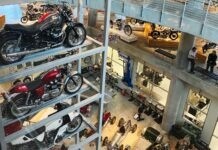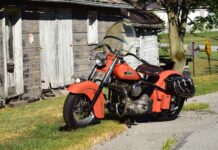Photos by Becky DeWitt
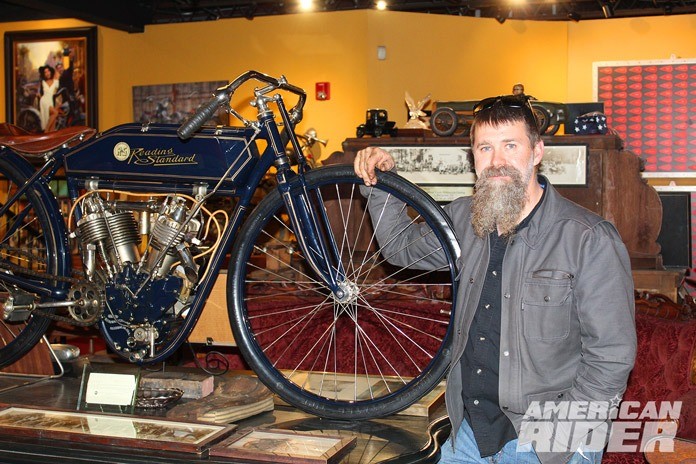
If you think time travel doesn’t exist, I’d have to argue with you. I’ve twice had the good fortune to take a ride on a straight-up bad-ass time machine.
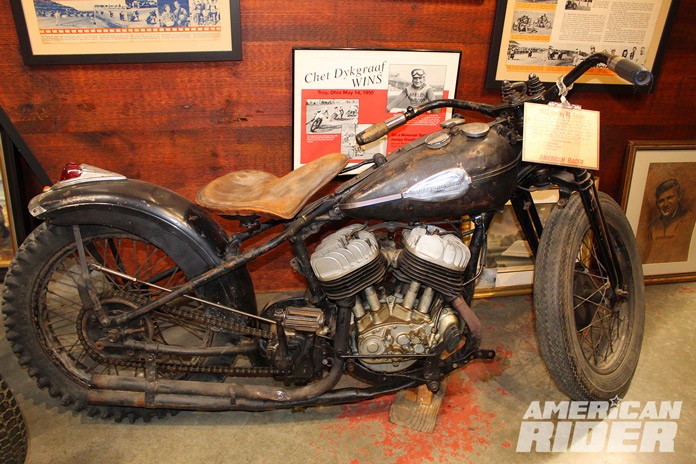
Since 2002, that time machine has sat at 62 Vintage Lane in scenic Maggie Valley, North Carolina. The Wheels Through Time Museum was founded by vintage bike restoration legend Dale Walksler, and inside is a treasure trove of American-made motorcycles, with 24 different brands represented in curated displays. The lion’s share of them are Harleys, plus many Indians, but you’ll also find more obscure brands like Henderson, Flescher, Yale, Reading-Standard, Crocker, Sears, and a one-of-a-kind Traub, just to name a few.

Maggie Valley is situated just 5 miles off the Blue Ridge Parkway. No matter what way you come at her, you are bound to have a wonderful ride, with a boatload of wondrous natural beauty to point your camera at and click the shutter.
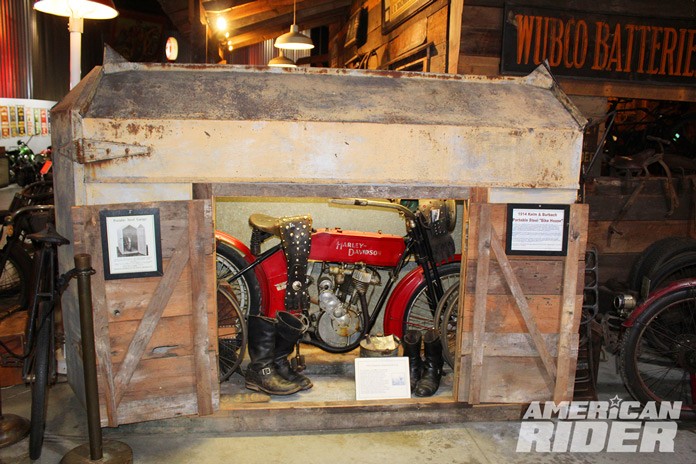
Related: Wheels Through Time Raffle: 1937 Harley-Davidson Knucklehead
Dale Walksler found this site while returning to his Chicago home after a trip to Amelia Island in Florida. Running low on fuel, he took the Maggie Valley exit to get some gas. After a look around the area, Dale knew this was the right place to move his museum from its location adjacent to his Harley shop in Illinois.

Maggie Valley was already a big tourist destination due to its proximity to the spectacular Blue Ridge Parkway and the expansive 522,000-acre Great Smoky Mountains National Park, as well as the now-shuttered Ghost Town Amusement Park. As such, the town has more than its fair share of hotels, motels, restaurants, gas stations, and other amenities close to the museum for visitors’ convenience.
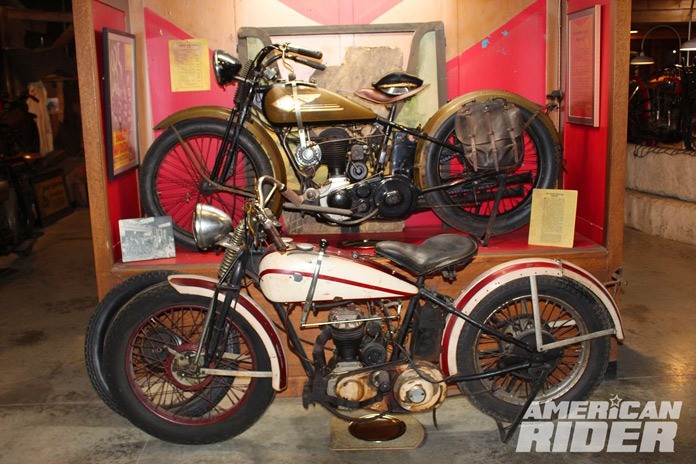
The goal of Wheels Through Time is to preserve, teach, and celebrate motorcycling’s rich history, as well as to entertain. Matt Walksler, Dale’s son, has run the museum since his father’s passing in 2021.
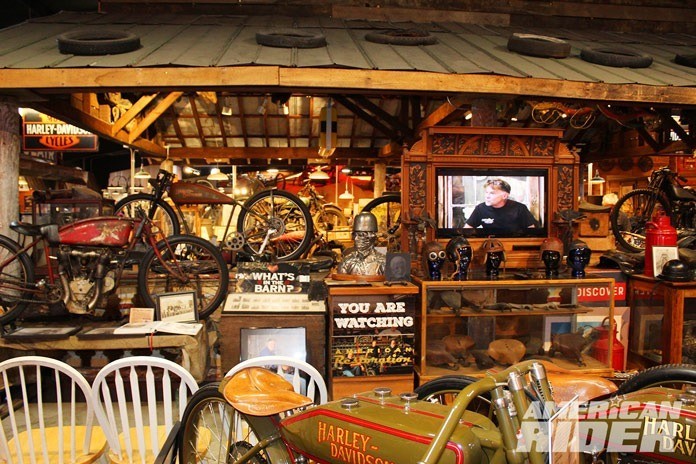
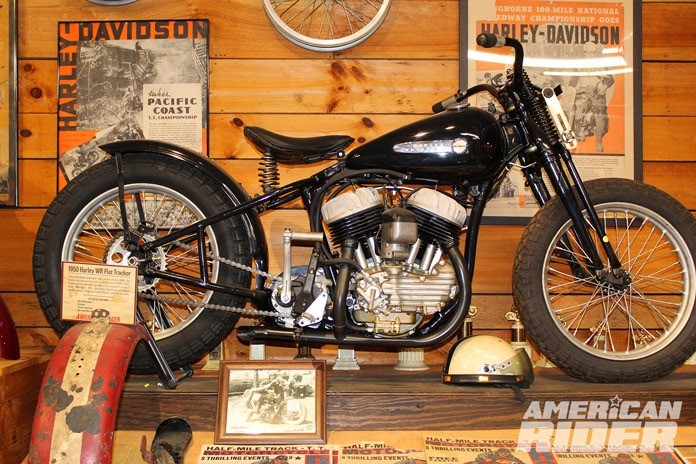
A variety of motorcycle history is on display, like Lez Myer’s extremely modified Harley Panhead dragbike. In 1958, this 80ci machine clocked 117.18 mph at the Red River Drag Strip in Wichita Falls, Texas, thus becoming Top Eliminator for the Rocky Mountain and Southwest that year.


Another unique piece of history is the 1977 Shovelhead ridden around the world by USMC Captain Stanley Sieja. The hardest part of that journey must have been holding his breath the entire time he crossed the Atlantic and Pacific! Seriously though, Sieja’s trip took two years and subjected him to many dangers and hardships. He might have some words of rebuke for those who claim Shovelheads are unreliable.
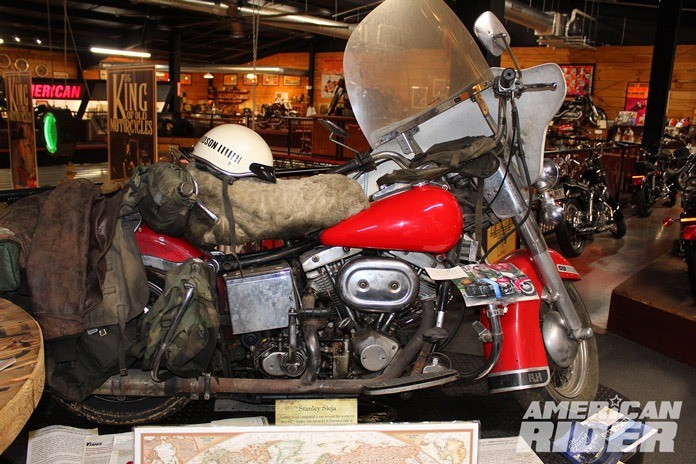
I couldn’t resist wrapping my hand around the throttle grip of another piece of motorcycle history: the “Duck Bike,” which was given its moniker because of the mallard painted on its tank. It was made famous by four-time AMA Grand National Champion and Motorcycle Hall of Famer Carroll Resweber. I had a real hankering to fire her up and see just how fast I could whip it around the spacious facility. Since the museum is known as “The Museum That Runs,” I figured it might also be the “Museum That Allows Test Rides.” Andy, an employee there, let me know that was not the case. Thanks for raining on my parade, Andy.

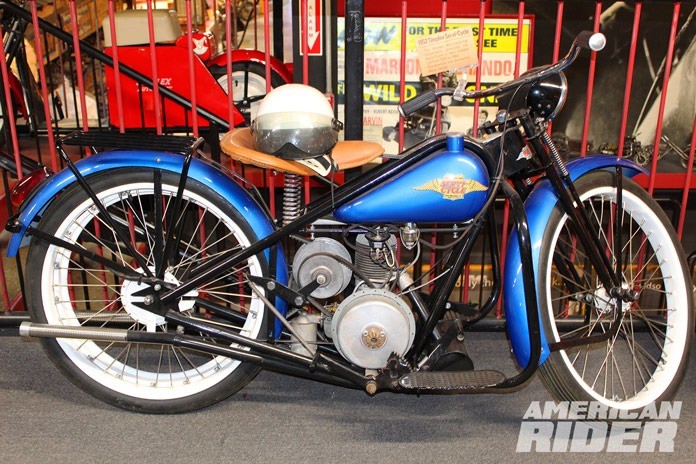
A collection of historic American bikes wouldn’t be complete without a Crocker, one of the rarest and most expensive motorcycles in the world. Built from 1936 until 1941, only about 75 Crockers were produced, and they were the most powerful bikes on the road, humbling even the Knuckleheads of the day. The 1937 Hemi-head Crocker at the museum is stunning.

Related: Precious Crockers: The Million-Dollar Motorcycle?
Along with the many cool and interesting machines, you can also view a lot of vintage motorcycle clothing, tools, signs, old advertisements, and even some prosthetic limbs. The prosthetic hook arms were apparently once owned by Thomas Leroy “Hooks” Norton, according to the name written on a gas tank that was hanging right beside the prosthetic arms. I have no idea who the previous owner of the leg was.
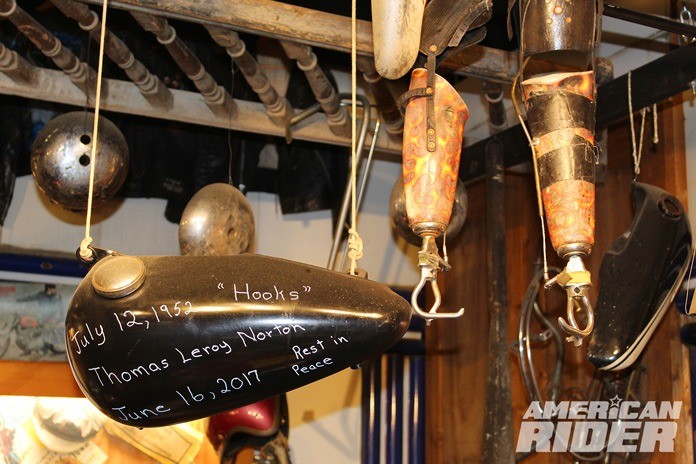
One of the things that sets the museum apart from others is the manner in which the machines are shown. Period-correct bike shops and service stations have been created to display the bikes inside the building that houses this wonderful collection. There is even a hill built in the middle of the joint to exhibit cool hillclimb bikes. Neat stuff.

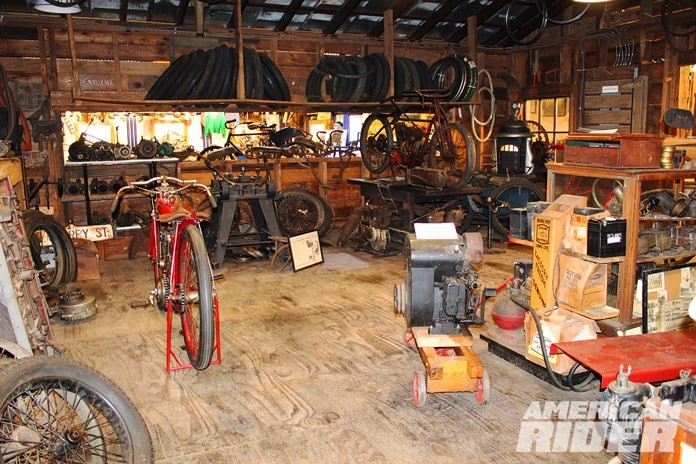
But Wheels Through Time isn’t just a motorcycle museum. You will also see old cars, mining machinery, Harley-powered farm equipment, an Indian outboard motor, a motorcycle-engined snow toboggan, and even an airplane powered by a Harley motor.

Do yourself a favor and get to the Wheels Through Time Museum to see it for yourself. It’s a fascinating collection of American motorcycle history with a top-notch staff. Surveys show that 100% of really cool people love it.

Tickets are $15 for folks between the ages of 15 and 65, while those over 65 pay $12. Rugrats from 6 to 15 pay $7, and crumb chewers under 6 are free. Hours are 10 a.m. to 5 p.m., Thursday through Monday. Visit Wheel Through Time’s website for more information.

The Mysterious Traub Motorcycle: Hidden for Decades in a Brick Wall
The Traub motorcycle is one of motorcycling’s most enigmatic stories. Built around 1916 by a self-described “self-employed experimental machinist” named Richard Traub, it features a bespoke 78ci side-valve V-Twin engine, which was quite big for the era.

But the most amazing part of the Traub’s story is that it was lost to history until being discovered in a brick wall of a suburban Chicago house back in the late 1960s. At that time, nothing was known about the machine’s history or its creator. Further research by the Walkslers revealed that Mr. Traub ran a motorcycle repair shop in a building behind the house where the bike was found. Why the beautifully constructed and ahead-of-its-time bike was bricked up in the wall is a mystery.

While we were at the museum, Matt and his crew were working on the Traubs’ broken kickstart assembly. Though Traub built most of his beautiful machine from scratch, including casting his own engine cases, the kickstart assembly was sourced from a Henderson. Maybe if Mr. Traub wouldn’t have been such a slacker, he’d have made his own higher-grade kicker assembly, and the damned thing wouldn’t have broken during our visit.
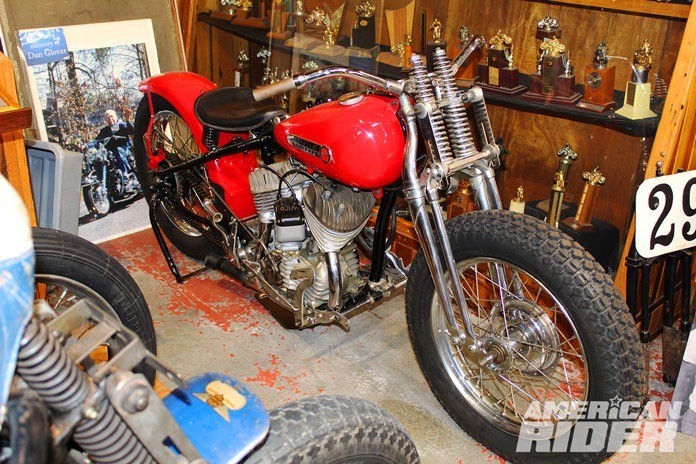
Lesson to the kiddies out there: The easy way isn’t always the best way. Lesson 2: Don’t hide your motorcycles in brick walls. Of course, I’m joking about the slacker thing, but trying to figure out why he hid his motorcycle behind a brick wall is driving me insane. Oh well, those who know me are acutely aware that my road to insanity is a short one.





